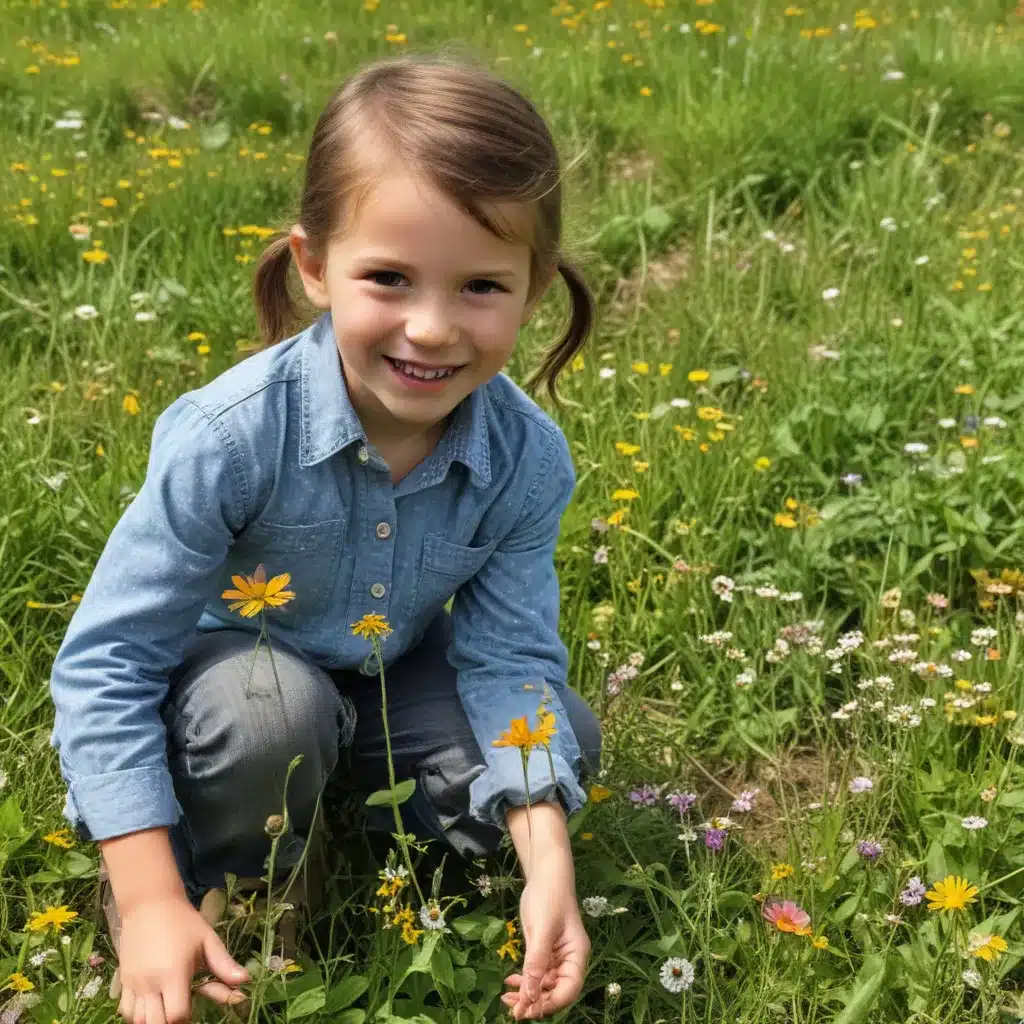
Exploring the Farm’s Meadows: A Wildflower Identification Adventure
At Crooked Pines Farm, we take great pride in our diverse meadow ecosystems, where a vibrant tapestry of native and naturalized wildflowers bloom in stunning displays throughout the seasons. These grassland habitats are teeming with life, from the buzzing of pollinators to the scurrying of small mammals. As a farm educator, I’m excited to invite you on a journey of botanical discovery, exploring the wonders of our meadows and learning to identify the fascinating flora that call them home.
Meadow Ecosystem
Our farm’s meadows are not merely expanses of grass – they are dynamic, interdependent systems that support a remarkable diversity of plant life. The grasses provide the structural foundation, creating a lush, verdant carpet that undulates with the gentle breeze. Scattered amidst the grass are a myriad of wildflowers, each with its unique shape, color, and growth habit. Some are native species, like the vibrant blue camas lilies and the sunny balsamroot, that have thrived here for generations. Others are naturalized introductions, such as the cheerful daisies and the delicate Queen Anne’s lace, that have become integral parts of the meadow community.
Seasonal Changes
The meadows at Crooked Pines Farm are a study in seasonal transformation. In the spring, the first blooms emerge, dotting the landscape with splashes of color. The camas lilies push up through the rich, mossy soil, their violet-blue flowers contrasting beautifully with the lush green grasses. As the days grow longer and warmer, the meadows come alive with a symphony of wildflowers – lupins, yarrow, fireweed, and countless others. By midsummer, the meadows reach their peak, a veritable tapestry of shapes, sizes, and hues. As autumn approaches, the landscape shifts once more, with the grasses turning golden and the wildflowers giving way to the vibrant foliage of shrubs and trees.
Wildflower Identification
Exploring the meadows and learning to identify the diverse array of wildflowers is a captivating pursuit, one that can engage the senses and inspire a deeper appreciation for the natural world. Close observation is the key, as each blossom offers a unique set of characteristics to examine and appreciate.
Common Meadow Flowers
Some of the most common wildflowers you’ll encounter in our meadows include the delicate forget-me-nots, the bold Indian paintbrush, and the fragrant wild roses. Each of these plants has its own story to tell, from their evolutionary adaptations to their cultural significance. By learning to recognize these familiar faces, you’ll develop a richer understanding of the meadow ecosystem.
Flower Characteristics
When identifying wildflowers, pay close attention to the arrangement of the petals, the shape of the leaves, and the overall growth habit of the plant. Daisy-like flowers, with their radiating petals surrounding a central disk, are a common sight, while legumes like clovers and vetches can be identified by their distinctive pea-like blossoms. Some flowers, like the columbines, boast intricate, spurred blooms, while others, like the buttercups, have a more simple, cup-shaped structure.
Flower Families
As you become more adept at wildflower identification, you may begin to notice patterns and groupings, as many of the meadow plants are related to one another. The daisy family, for example, is well-represented, with species like daisies, sunflowers, and asters all sharing common features. The legume family, with its pea-like blossoms, is another prominent player in the meadow ecosystem.
Botanical Exploration
Engaging in the art of botanical exploration is a rewarding way to deepen your connection with the natural world. Whether you’re a seasoned naturalist or a curious newcomer, there are countless ways to immerse yourself in the wonder of the meadows.
Observation Techniques
Start by closely inspecting the flowers, taking note of their unique characteristics. Gently touch the delicate petals, breathe in the subtle scents, and observe the intricate patterns that adorn each blossom. Supplement your observations with a field guide or online resources to aid in identification.
Documentation Methods
Capture the beauty of the meadows through the lens of your camera, or put pencil to paper and sketch the flowers you encounter. These creative pursuits not only preserve memories but also sharpen your powers of observation. Consider sharing your photographs or drawings on social media, tagging us at @crookedpinesfarm, to inspire others and contribute to our collective understanding of the meadow’s biodiversity.
Citizen Science
You can also take your exploration to the next level by participating in citizen science initiatives. Programs like iNaturalist and Project BudBurst allow you to document your wildflower sightings, contributing to larger databases that aid in biodiversity monitoring and habitat conservation efforts. By engaging in these collaborative projects, you can become an active steward of the natural world.
Ecological Significance
The meadows at Crooked Pines Farm are not merely aesthetically pleasing – they play a vital role in the overall health of our ecosystem. As you wander through the vibrant sea of wildflowers, consider the intricate interconnections that sustain this delicate balance.
Pollinator Attraction
The meadows are a pollinator’s paradise, offering an abundance of nectar sources and host plants for a diverse array of insects, birds, and small mammals. From the industrious bees pollinating the clovers to the graceful butterflies sipping from the milkweed, these meadows are essential to the vitality of our local pollinator populations.
Habitat Conservation
As development and land-use changes continue to threaten natural habitats, the preservation of meadows like ours becomes increasingly crucial. By restoring native plant communities and managing invasive species, we can ensure that these vibrant grasslands continue to thrive, providing crucial food and shelter for a myriad of wildlife.
Join us at Crooked Pines Farm as we celebrate the beauty and significance of our meadows. Whether you’re a seasoned botanist or a curious explorer, there is always more to discover in this ever-changing, ever-captivating landscape. So grab your field guides, dust off your camera, and let’s embark on a wildflower identification adventure that will fill your heart and mind with wonder.


